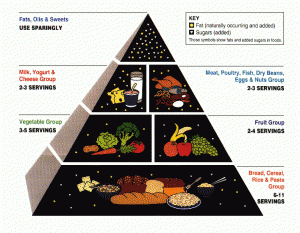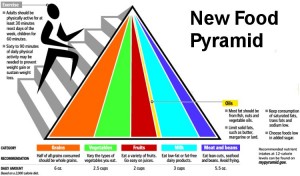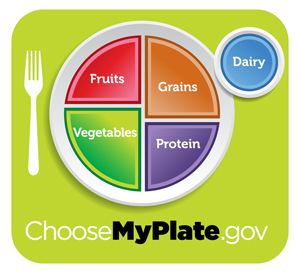USDA’s Food Pyramid Replacement
The U.S. Department of Agriculture (USDA) has updated their food recommendation with MyPlate, which is supposed to be a more accurate and easier to follow compared to it’s successors.
History Lesson
First, let’s quickly recap where we have been, so you can better understand – or appreciate? – where we are now. You be the judge.
1956 – The USDA came up with the basic four basic food groups:
•Grains: bread, cereal, rice, pasta
•Protein: meat, poultry, fish, eggs, beans, nuts
•Fruits & Vegetables
•Dairy: milk, cheese, yogurt
1992 – The USDA made some adjustments to the basic four food groups, and even provided a visual for the first time. This version now provides recommendations, which were under a lot of criticism. Some servings were the minimum recommendations, while other servings were the maximum recommendations. It was confusing and not quite accurate.
“The original icon was a bit misleading, e.g., all fats are bad,” said Sara Bleich, an assistant professor at the Johns Hopkins Bloomberg School of Public Health in Baltimore.
2005 – The USDA revised the dietary recommendations, serving sizes and came up with a new image and called it MyPyramid. This new pyramid even included some stairs on the side of the pyramid with a persona climbing it to promote exercise – in addition to healthy eating.
2011 – USDA came out with MyPlate, which is a very simple visualization of portion size for each of the major food groups.
If you want to get details about daily recommendations and servings, you will have to go to ChooseMyPlate.gov
“Portion size, even of healthy foods, plays a major role in controlling weight and reducing the risk of a number of chronic diseases,” said Marisa Moore, national spokeswoman for the American Dietetic Association.
What do you all think of the new MyPlate that’s now available? do you think that it is easier for you to have a balanced diet?
I think it’s nice to see a visual in the form of a plate, but I am not sure that this provides enough detail. What about healthy forms of protein compared to not-so-healthy forms of protein? Apparently the USDA’s website has it, but I didn’t find it to be detailed enough.
I guess that’s what SkinnyTwinkie.com is here for, right?! ; )
Feel free to follow us, however you like: Google+, Facebook, Twitter, Pinterest



